Finding time to exercise can be tricky for those with a packed schedule. Balancing work, family, and social commitments often leave little room for lengthy gym sessions. The good news is that you can stay fit and healthy with quick, effective workouts tailored for busy people.
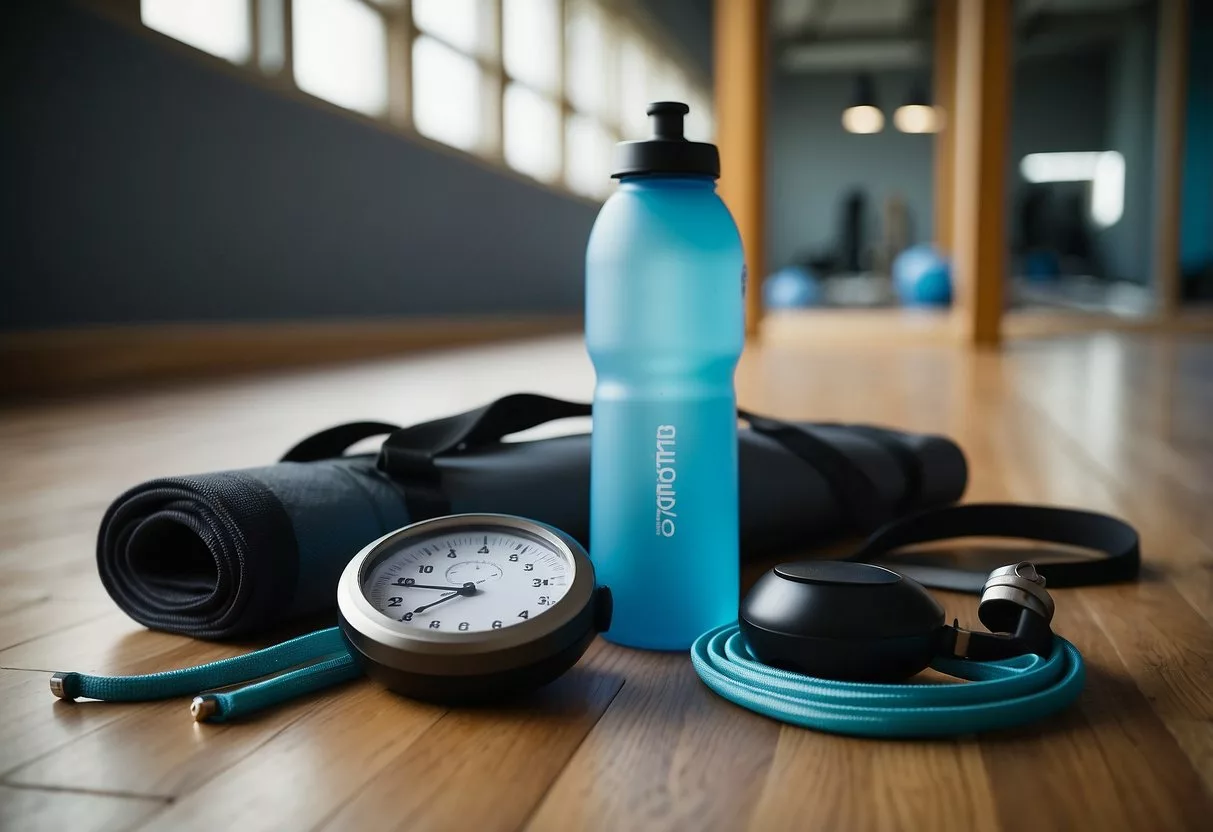
These short workouts can fit easily into your day while still offering great benefits. A well-planned 10-minute jump rope routine or simple bodyweight exercises can improve strength and endurance. Short, intense activities help maintain fitness without needing much time.
Even brief exercise sessions can effectively boost energy and enhance overall health. Including a mix of strength training, cardiovascular exercises, and flexibility routines ensures a balanced approach. Making the most of limited time with these routines can make your fitness goals achievable, even on the busiest days.
Key Takeaways
- Quick workouts can fit into busy schedules.
- A mix of strength, cardio, and flexibility exercises is effective.
- Short, intense routines provide valuable health benefits.
Understanding the Basics
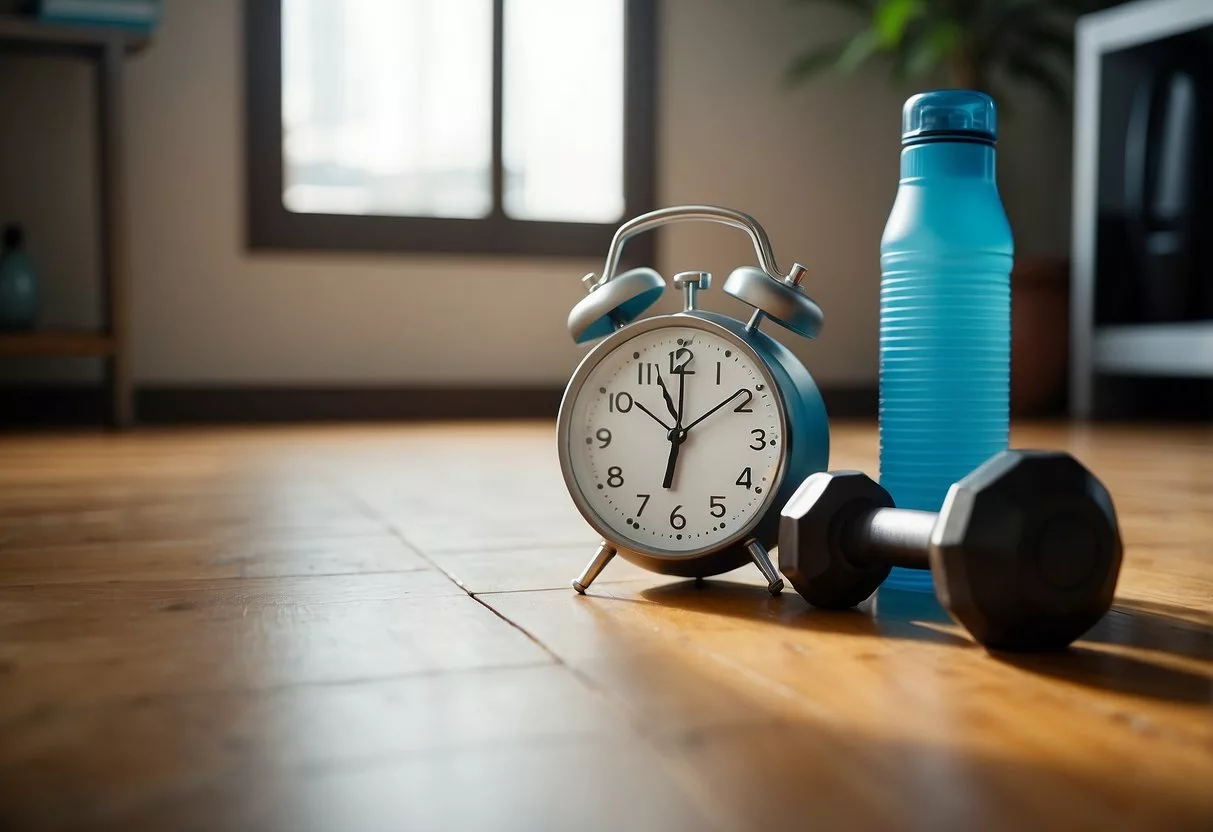
Quick workout routines are great for busy people. They can help achieve fitness goals efficiently and target major muscle groups in short periods.
Defining a Quick Workout
A quick workout typically lasts around 10 minutes. It focuses on high-intensity exercises that can be done with little to no equipment. Examples include jumping jacks, push-ups, and squats. These exercises can boost heart rate and provide a full-body workout.
A well-structured routine might feature exercises like squat jumps and bicycle crunches. They are effective and can be done in a small space, making them perfect for busy schedules.
Benefits of Exercise for Busy Individuals
Regular exercise offers significant health benefits. It improves cardiovascular health, strengthens muscles, and boosts mood. Even short, high-intensity workouts can improve energy levels and mental focus throughout the day.
For busy people, convenience is crucial. Quick routines can be easily added to a daily schedule. They provide the needed physical activity without taking a lot of time, supporting overall fitness and well-being. Additionally, these workouts target multiple muscle groups, promoting a balanced and comprehensive fitness regimen.
%-Minute Workout Routine Structure
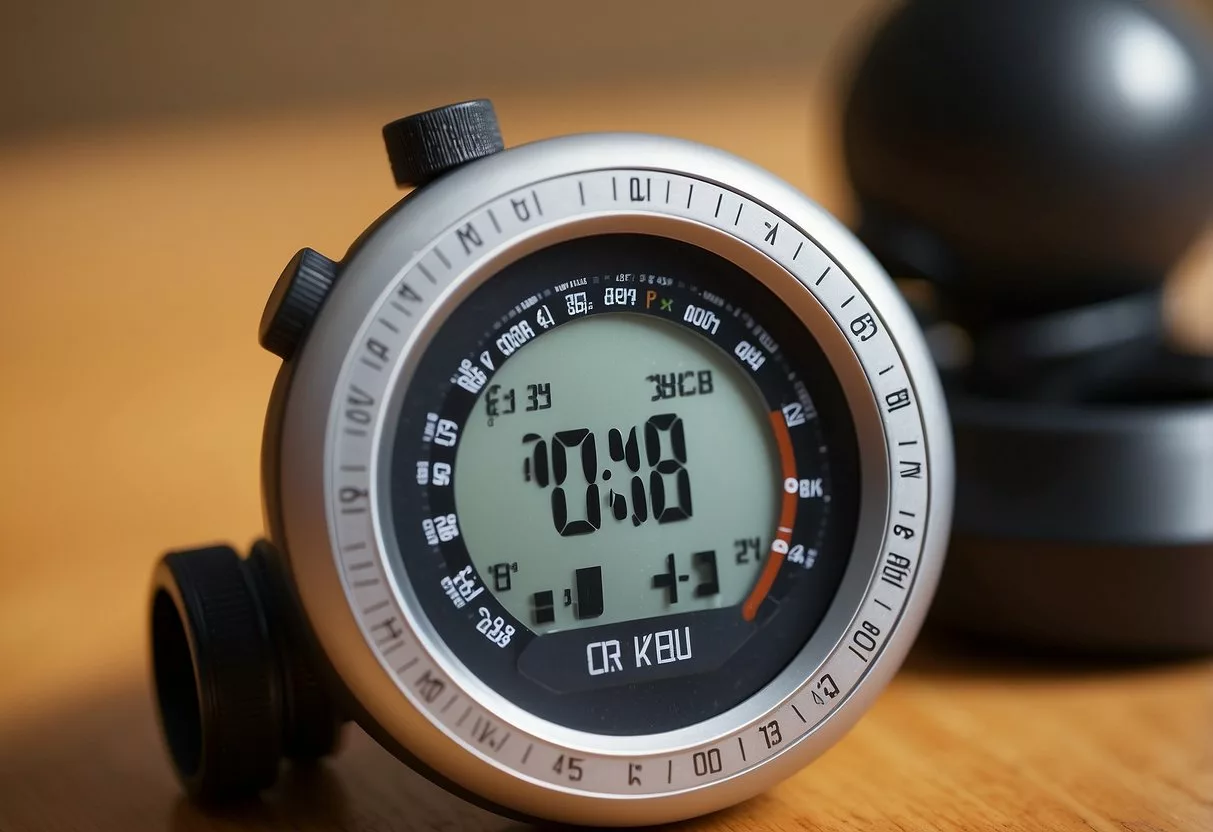
A well-structured %-minute workout routine can help you stay fit even on the busiest days. This section covers the essential parts, such as the warm-up and the preparatory steps you need to take.
Warm-up and Preparations
A proper warm-up is crucial before jumping into a %-minute workout. Start with basic dynamic stretches like leg swings, arm circles, and torso twists. These movements help increase your range of motion and get your muscles ready for exercise.
Next, include a brief cardio workout such as jogging in place or high knees for about 2-3 minutes. This helps elevate your heart rate and prepare your body for more strenuous activities.
Don’t forget to add some light foam rolling if you have tight muscles. This can help release any tension and improve blood flow to the targeted areas. A good warm-up reduces the risk of injury and makes your workout more effective.
Strength Training Components
Strength training focuses on building muscle strength in various parts of the body. The key areas include the upper body, core, and lower body, each requiring specific exercises to target the major muscle groups effectively.
Upper Body Strength
Upper body strength is essential for daily activities and overall fitness. Exercises like push-ups, dumbbell presses, and chin-ups target the chest, arms, and back. Push-ups are great for working the chest and triceps. They also engage the core for stability.
Dumbbell presses focus on the chest and shoulders, while chin-ups primarily target the back and biceps. Including compound exercises like these ensures various muscles are engaged, enhancing strength and muscle coordination.
A sample workout for upper body strength might include:
- Push-ups: 3 sets of 12 reps
- Dumbbell Presses: 3 sets of 10 reps
- Chin-ups: 3 sets of 6 reps
These exercises target the major muscle groups effectively, building strength and endurance.
Core Strengthening
Strengthening the core is vital for stability and balance. Core workouts focus on the abs and lower back, supporting better posture and reducing injury risks. Planks, ab crunches, and glute bridges are effective core exercises.
Planks engage the entire core, providing a static challenge that builds endurance. Ab crunches isolate the abdominal muscles, making them stronger and more defined. Glute bridges target the lower back and glutes, enhancing overall core stability.
A core strengthening routine could include:
- Plank: Hold for 1 minute
- Ab Crunches: 3 sets of 15 reps
- Glute Bridges: 3 sets of 12 reps
These exercises ensure a comprehensive approach to core strength.
Lower Body Workouts
Lower body strength is crucial for mobility and athletic performance. Squats, reverse lunges, and goblet squats effectively target the quads, hamstrings, and glutes.
Squats are a fundamental move, engaging multiple muscle groups at once. Reverse lunges are excellent for balance and leg strength, while goblet squats add an extra challenge with weights.
An example lower body workout could include:
- Squats: 4 sets of 10 reps
- Reverse Lunges: 3 sets of 12 reps per leg
- Goblet Squats: 3 sets of 8 reps
By focusing on these exercises, individuals can build strong legs and enhance overall lower body function. This approach ensures balanced development and improved strength.
Cardiovascular Training

Cardiovascular training is essential for maintaining heart health, burning calories, and improving overall endurance. Below are approaches that fit into a busy lifestyle without sacrificing effectiveness.
Short and Effective Cardio Blasts
For people with limited time, a quick 10-minute cardio workout can be very effective. High-intensity intervals like jumping jacks, burpees, and mountain climbers elevate heart rate quickly.
Sample 10-Minute Workout:
- Warm-up: Mock jump rope – 1 minute
- Burpee with push-up – 2 minutes
- Squat jumps – 2 minutes
- High knees – 2 minutes
- Jumping lunges – 2 minutes
- Cool-down: Walking in place – 1 minute
These exercises ensure the heart rate stays elevated, promoting maximum calorie burn and improved cardiovascular endurance. This routine can be completed any time of the day.
Integrating Cardio into Busy Lives
Walking and lightweight exercises require less time and preparation. Walk at a brisk pace during lunch breaks or between meetings. Incline walking is easier on joints while keeping the heart rate up.
Sample Routine:
- Warm-up: Light walking – 5 minutes
- Incline walking – 10 minutes
- Kettlebell swings – 5 sets of 20 reps
- Cool-down: Gentle stretching – 5 minutes
These easy-to-incorporate activities help maintain fitness without disrupting a busy schedule. They provide flexibility and can be carried out at home, work, or outdoors.
Flexibility and Balance
Improving flexibility and balance can significantly enhance physical health. Stretching exercises and yoga poses are excellent ways to achieve these benefits, even with a busy schedule.
Stretching for Better Movement
Stretching daily helps improve the range of motion and reduce muscle stiffness. It targets key muscles like hamstrings, calves, and shoulders. Toe touches improve hamstring flexibility while arm stretches enhance shoulder mobility. These stretches can be quickly done at home.
A simple stretching routine might include:
- Forward Bend: Stand with feet hip-width apart and bend forward to touch your toes. Hold for 20 seconds.
- Side Stretch: Stand tall, reach one arm overhead, and lean to the side. Hold for 20 seconds each side.
- Calf Stretch: Step one foot back, keep the heel on the ground, and lean forward slightly. Hold for 20 seconds each side.
Consistent stretching helps maintain good posture and prevent injuries.
Yoga Poses for Busy Schedules
Yoga combines stretching and balance, perfect for aiding flexibility. Quick yoga poses can fit into a tight schedule. Tree pose and Warrior II are great for balance and core strength. They don’t require much space or time.
Here are quick yoga poses:
- Tree Pose: Stand on one foot, place the sole of the other foot on the inner thigh, and balance. Hold for 30 seconds each side.
- Warrior II: Step one foot back, bend the front knee, and extend arms to the sides. Hold for 30 seconds each side.
- Cat-Cow Stretch: On all fours, alternate between arching and rounding the back. Repeat for one minute.
Practicing yoga can improve flexibility, enhance balance, and promote relaxation.
Developing a Consistent Routine
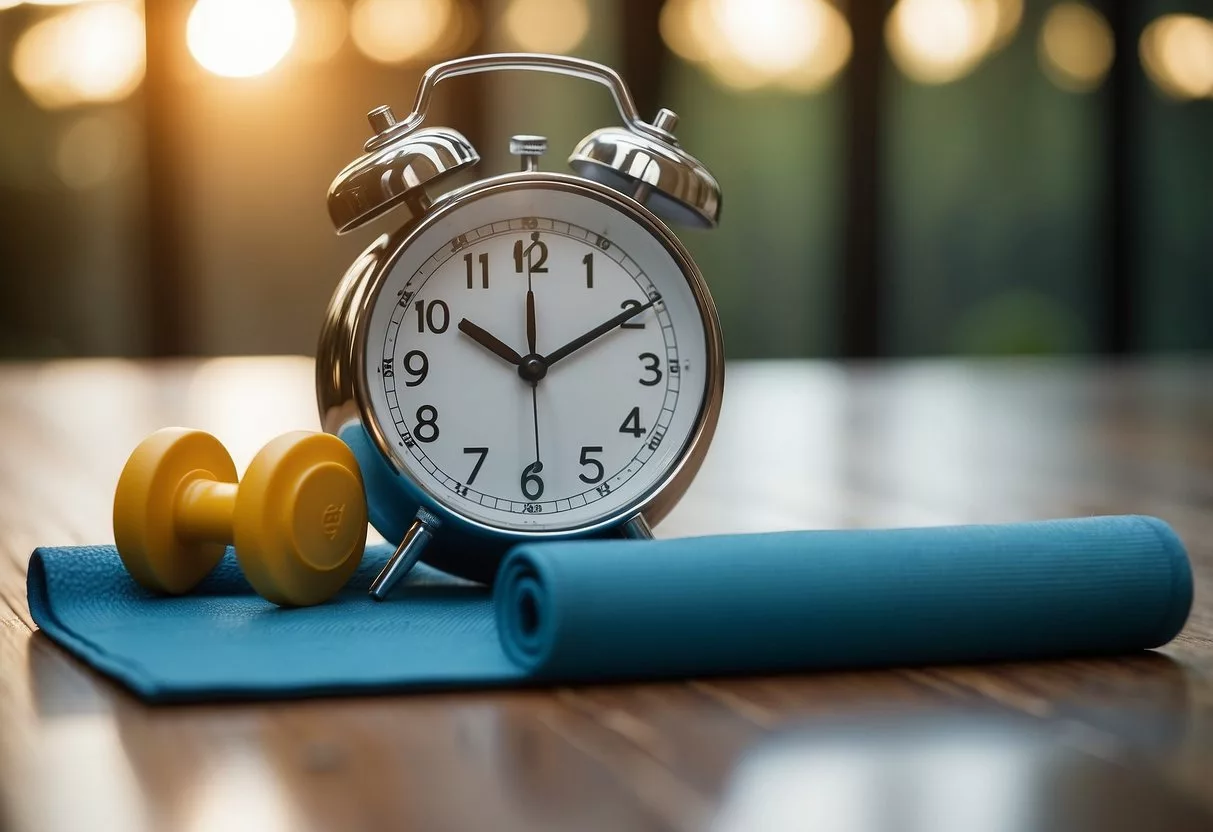
Creating a consistent workout routine starts with setting a fixed schedule. Picking the same time of day helps in making exercise a regular habit. Consistency is key, whether you choose early mornings or late evenings.
A 10-minute workout can be effective for those with a busy schedule. Short, intense sessions can still yield significant progress when done regularly.
Establishing a designated workout space at home ensures fewer distractions. This space should need no equipment to make workouts accessible and easy to start.
Track your workouts to monitor your progress. Keeping a simple log of what you do each day helps in seeing improvements over time.
Set realistic goals that fit into a busy lifestyle. Aim for sustainability rather than going too hard initially and burning out. Small, incremental goals are easier to stick with.
Combine exercise with daily tasks. For instance, a quick HIIT session during lunch break or a brief yoga routine before bed can integrate seamlessly into a busy day.
Here are some easy habits to maintain consistency:
- Wake up and go to bed at the same time each day.
- Prepare workout clothes and gear the night before.
- Find a trigger activity that signals workout time, like having a coffee or finishing work.
Following these steps can help make a consistent workout routine both manageable and effective for people with tight schedules.
Advanced Techniques and Progressions
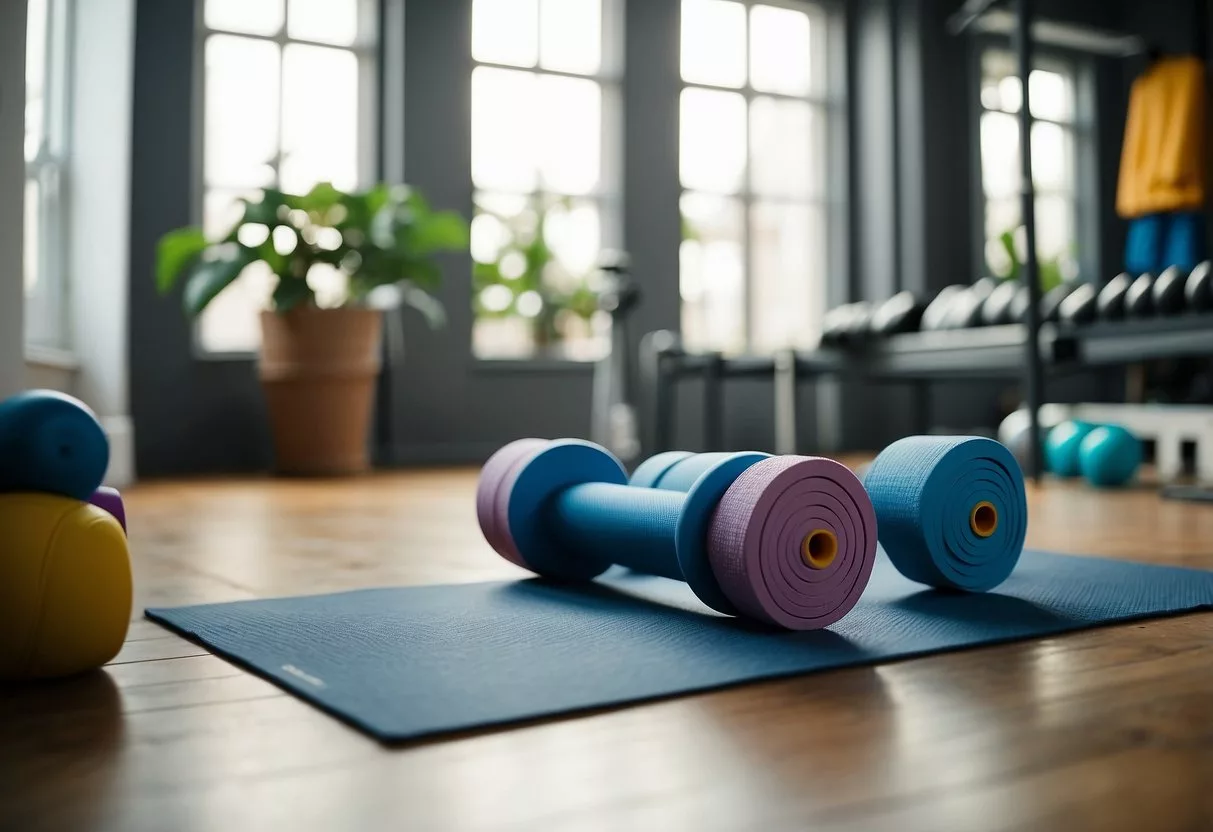
For those who want to take their workouts to the next level, advanced techniques like AMRAP and resistance training offer effective ways to boost strength, agility, and overall fitness.
Pushing Your Limits with AMRAP
AMRAP (As Many Rounds As Possible) workouts are perfect for individuals looking to push their limits. These sessions involve completing as many rounds of a set of exercises as possible within a specified time. AMRAP can include high-intensity interval training (HIIT) components, making it an effective way to improve cardiovascular health and promote weight loss.
For example, a 7-minute AMRAP routine may consist of exercises like push-ups, squats, and burpees. By limiting rest between exercises, participants maintain an elevated heart rate, burning more calories and building lean muscle. This approach also allows individuals to measure progress by increasing the number of completed rounds over time.
Incorporating Resistance and Weightlifting
To build a stronger body, incorporating resistance training and weightlifting is essential. This involves using weights or resistance bands to perform exercises that target different muscle groups. Weightlifting can enhance muscle strength, improve bone density, and boost metabolism.
Begin with exercises like deadlifts, squats, and bench presses. It’s important to start with a weight that is manageable yet challenging, gradually increasing the weight as strength improves. A common method is the rest-pause technique, where you lift at a high percentage of your one-rep max, rest briefly, and repeat until reaching a rep goal. Training on a soft surface can also help reduce strain on joints and improve balance.
Advanced resistance training doesn’t just enhance physical strength but also agility and overall fitness level. These techniques can be adapted for all fitness levels and goals, from weight loss to muscle gain.
Recovery and Self-Care
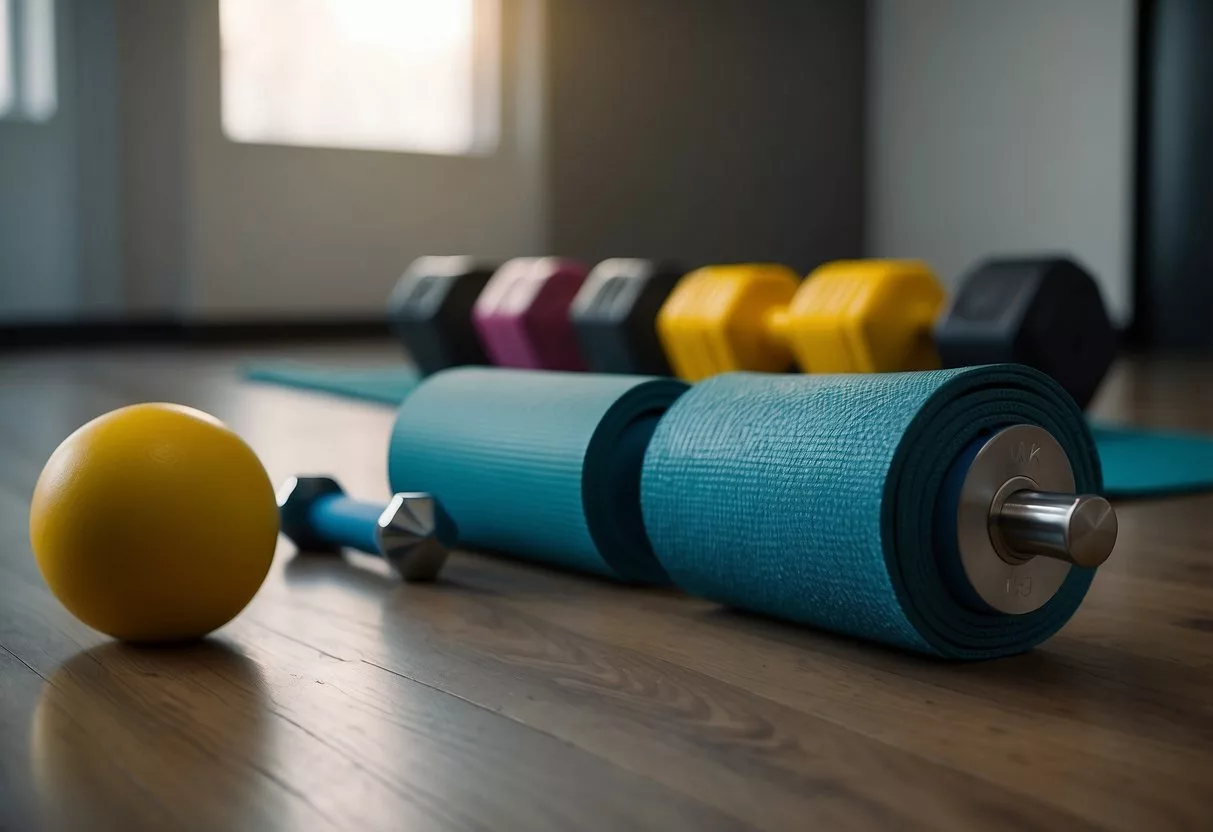
Taking care of muscles after a quick workout is key to staying healthy. Recovery reduces soreness and helps muscles grow stronger. Here are some simple ways to support recovery and self-care.
Warm-Up
A good warm-up is essential. This can be a quick 2-3 minute warm-up, as suggested by Certified athletic trainer Anna Hartman. It keeps muscles flexible and prepares them for exercise.
Foam Rolling
Foam rolling is effective for reducing muscle tightness. Spend about 5-10 minutes foam rolling main muscle groups. Focus on areas that feel sore to promote blood flow and reduce tension.
Stretching
Light stretching post-workout helps keep muscles flexible. Hold each stretch for about 30 seconds. This helps reduce stiffness and speeds up recovery.
Hydration and Nutrition
Drinking plenty of water and eating a balanced meal helps recovery. Water helps hydrate muscles, while proteins and carbs can repair and refuel them.
Rest
Resting is just as important as working out. It’s vital to get enough sleep and allow muscles to heal. Listen to your body and take a break when needed.
By following these simple steps, you can maintain a regular workout routine and support overall health without feeling overwhelmed.
Frequently Asked Questions

These answers provide practical ways to fit quick and efficient workouts into a busy lifestyle, focusing on high-intensity routines and effective exercises you can do at home or almost anywhere.
How can I integrate a quick workout routine into my daily schedule if I’m very busy?
For busy individuals, it’s important to find small pockets of time throughout the day. Try short sessions of 10-20 minutes during breaks, early mornings, or after work. Scheduling workouts like any other appointment can help maintain consistency.
What are effective full-body workouts for people with limited time?
Full-body workouts can include exercises like burpees, jumping jacks, and push-ups. These can be done at home or in a small space. High-intensity interval training (HIIT) is another effective option that targets multiple muscle groups in a short time.
What is the most time-efficient workout routine for people who can’t go to the gym?
Working out at home can be highly efficient. Bodyweight routines that incorporate squats, lunges, and planks are effective. Using videos or apps for guided workouts can help keep variety and motivation high.
Are there short, high-intensity workout plans suitable for a busy lifestyle?
Yes, HIIT is an excellent option for busy people. These workouts can be as short as 15-20 minutes but are very intense. Exercises like sprinting, cycling, or high-intensity bodyweight moves like burpees are typical in HIIT.
How can a busy individual maintain a regular exercise regimen at home?
Creating a dedicated workout space at home can help. Setting realistic goals and being consistent with routine, such as exercising at the same time each day, reinforces regularity. Online classes or fitness apps can offer structure and guidance.
Can you suggest a 3-day full body workout that fits a busy schedule?
Day 1: 15 minutes of cardio (running, cycling), followed by bodyweight exercises like push-ups, squats, and planks.
Day 2: Focus on HIIT, such as 20 minutes of alternating high-intensity exercises (burpees, jump squats) with short rest periods.
Day 3: Full-body strength training with dumbbells or resistance bands. Include exercises like shoulder presses, lunges, and deadlifts.